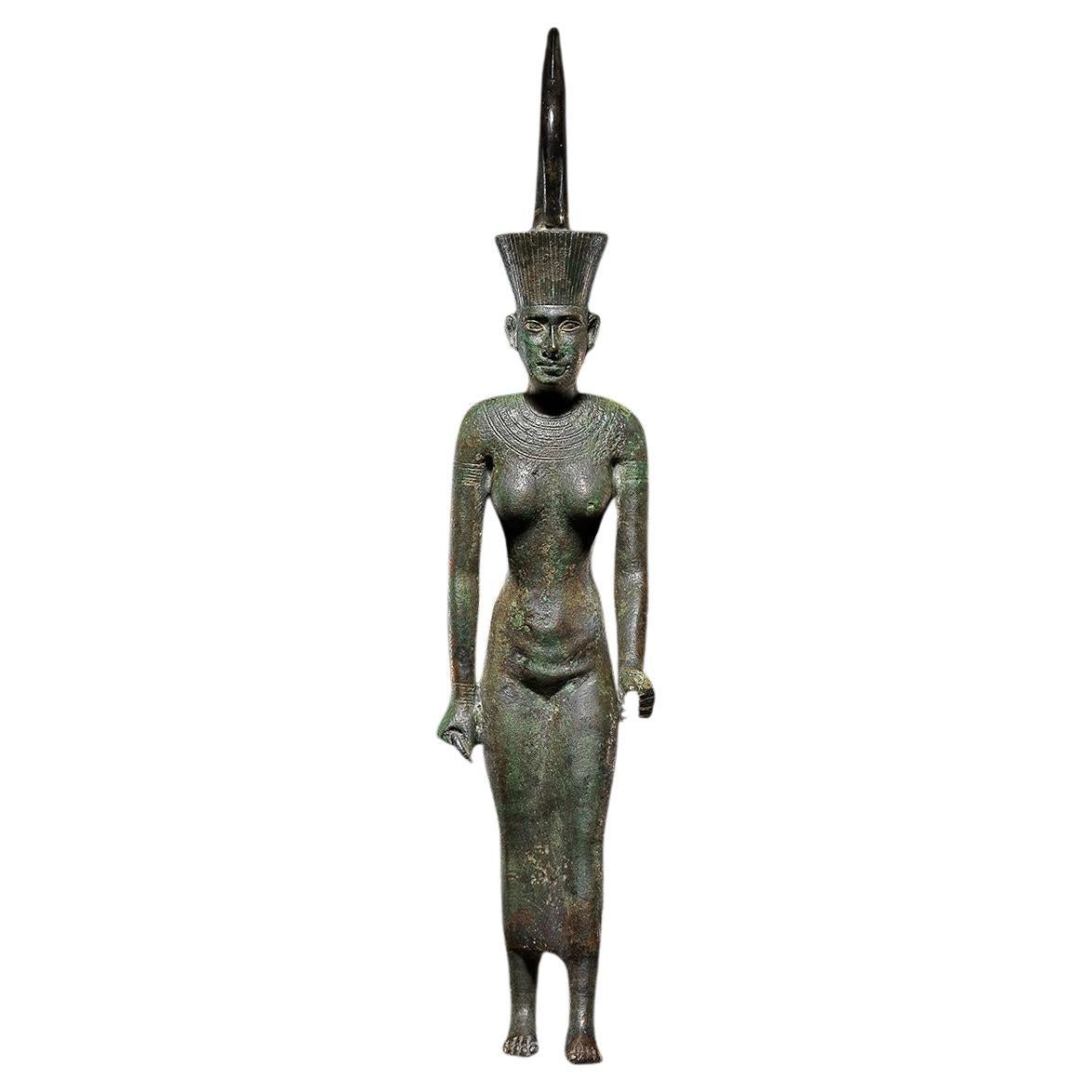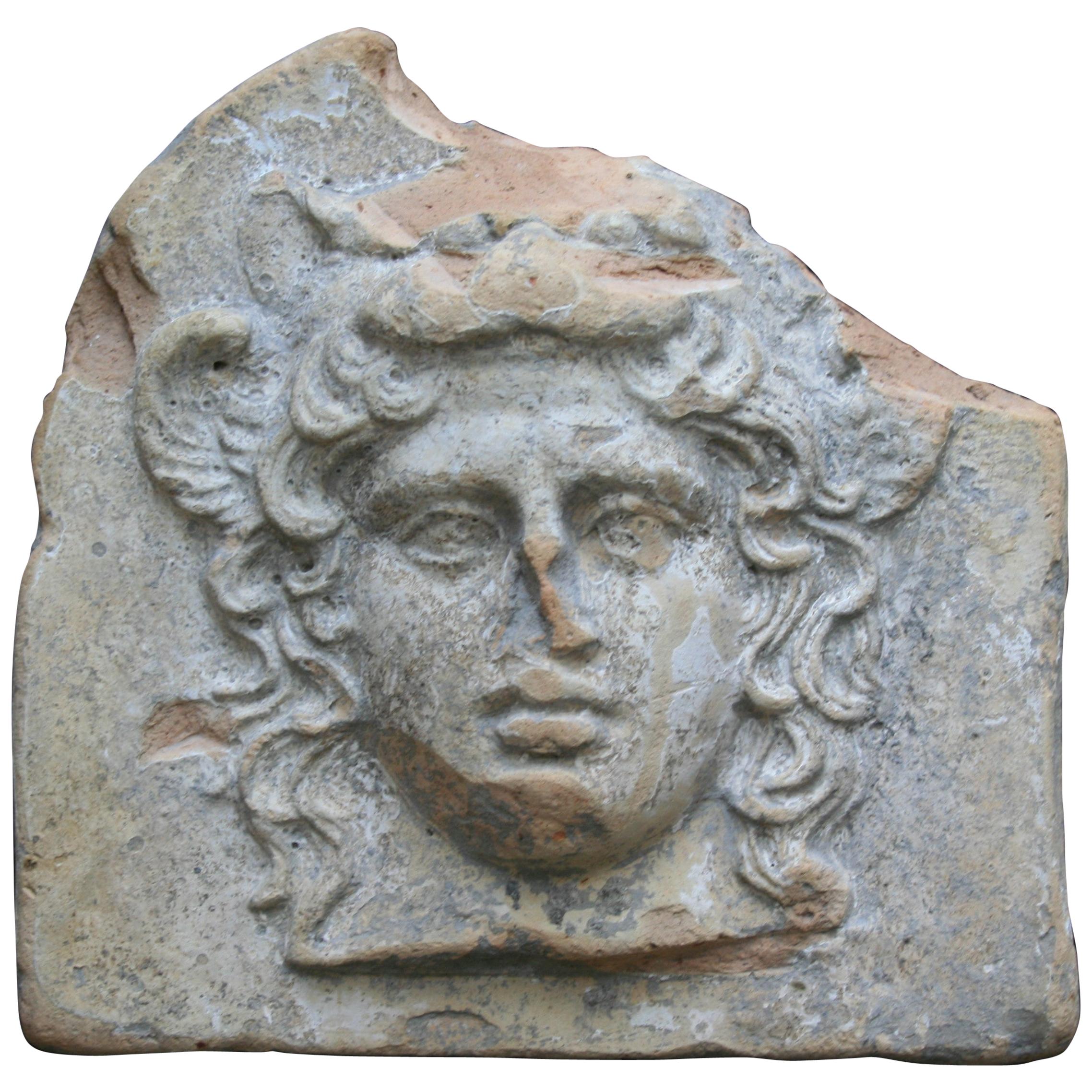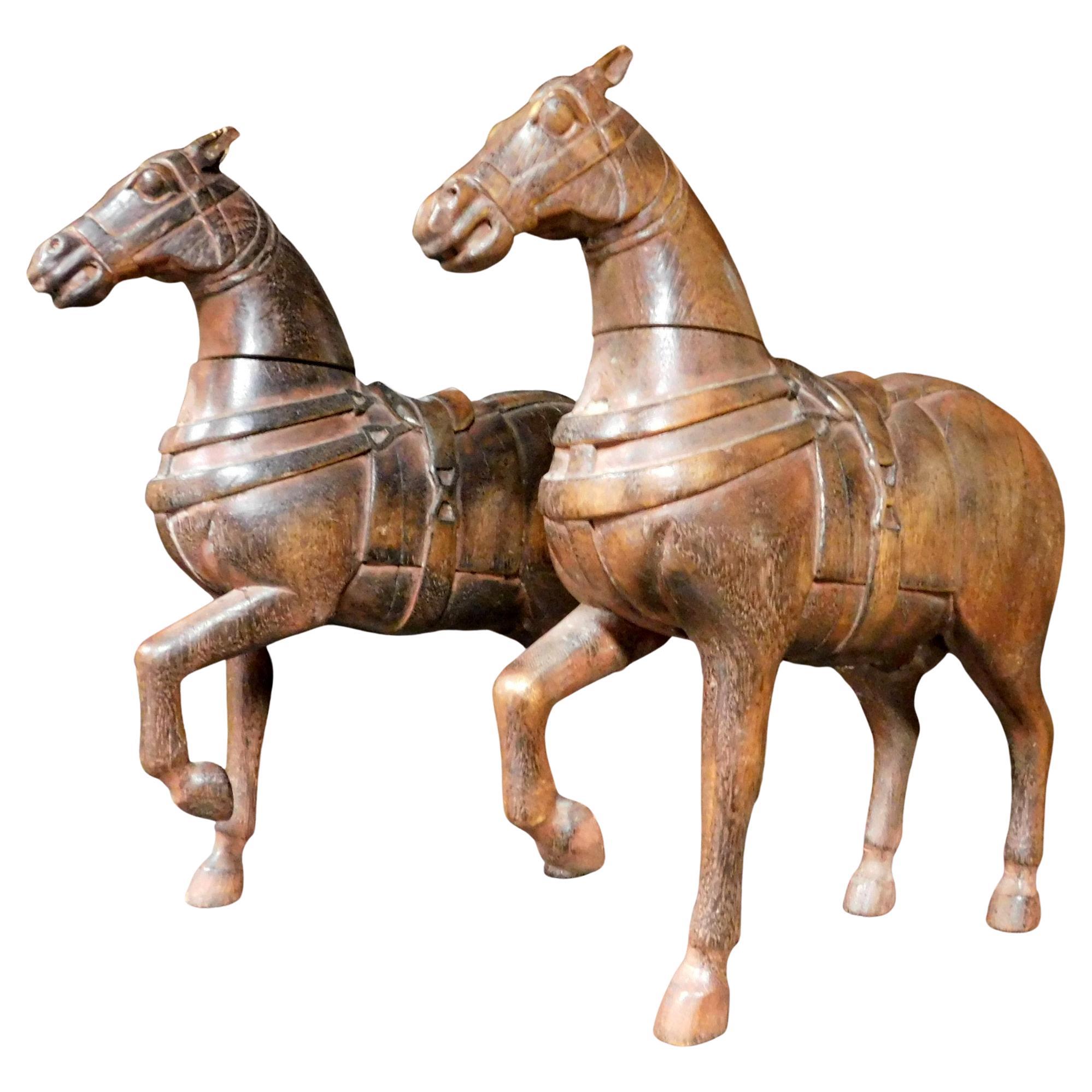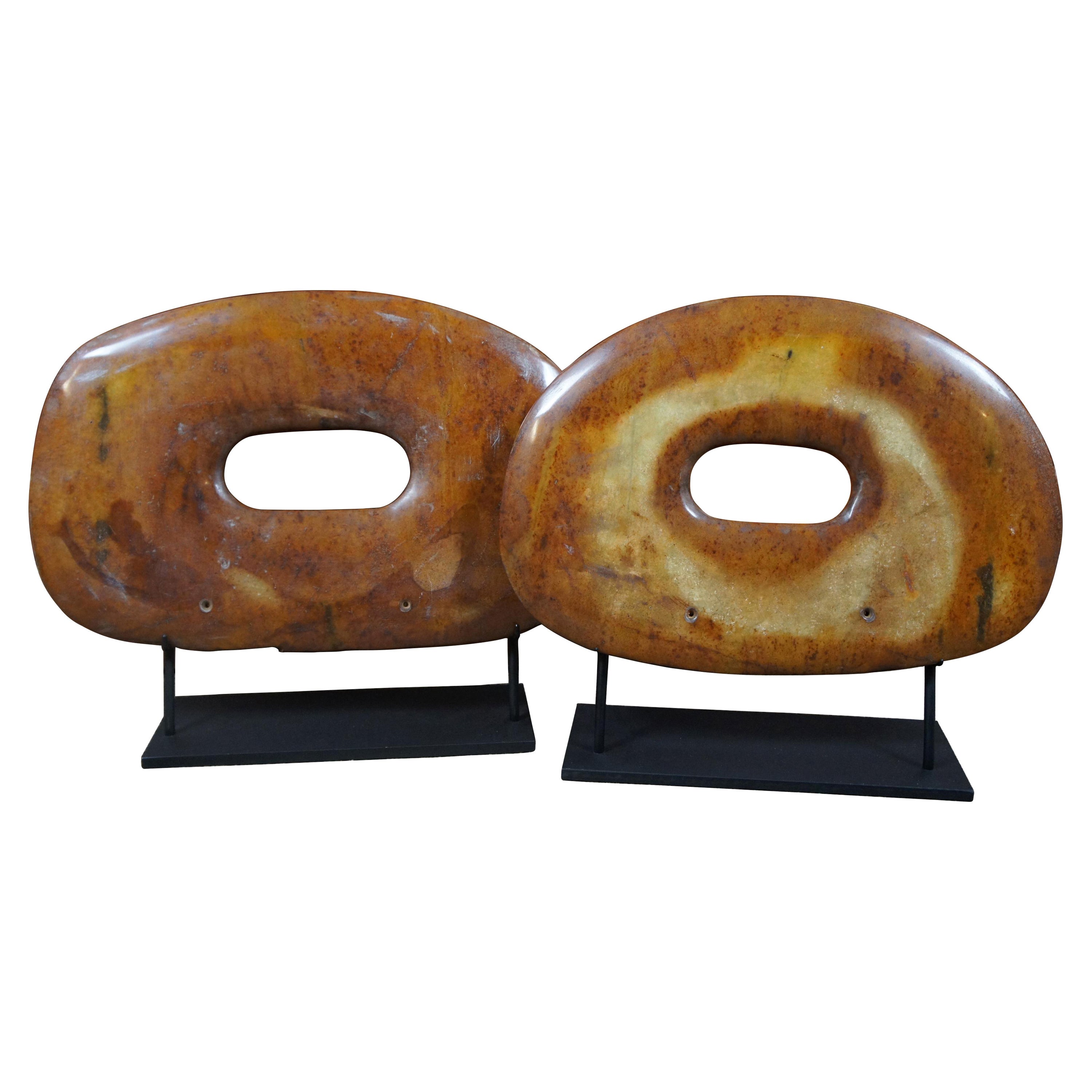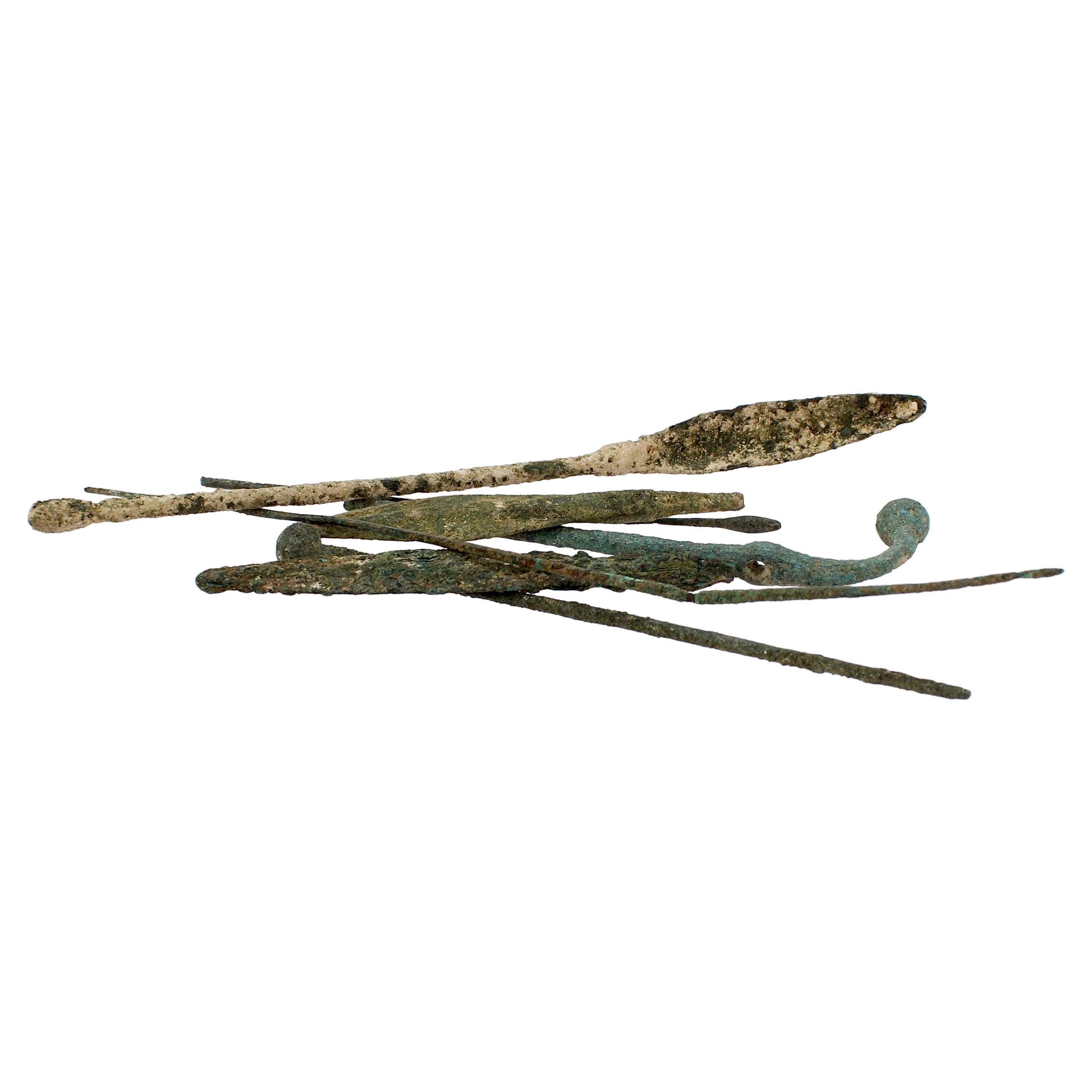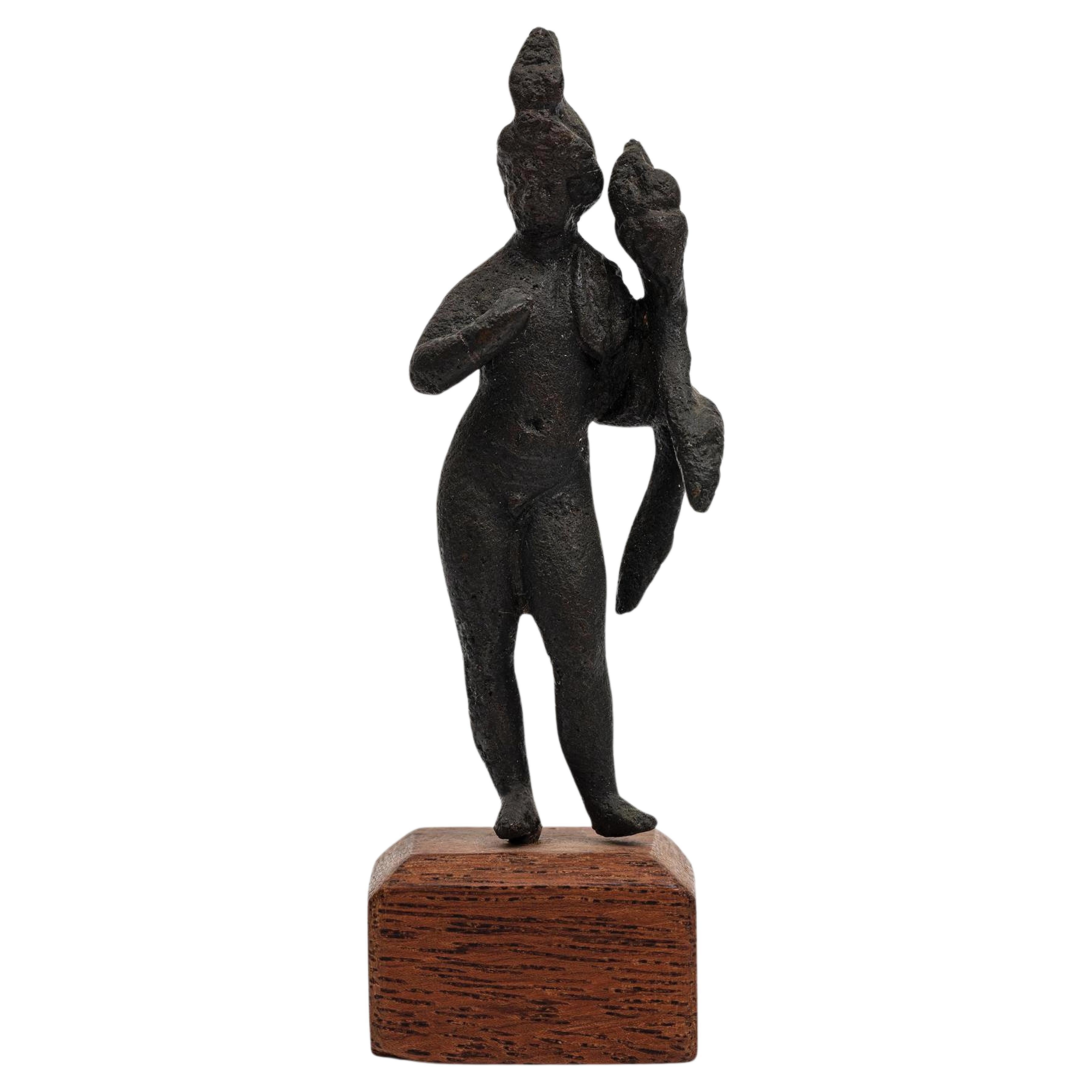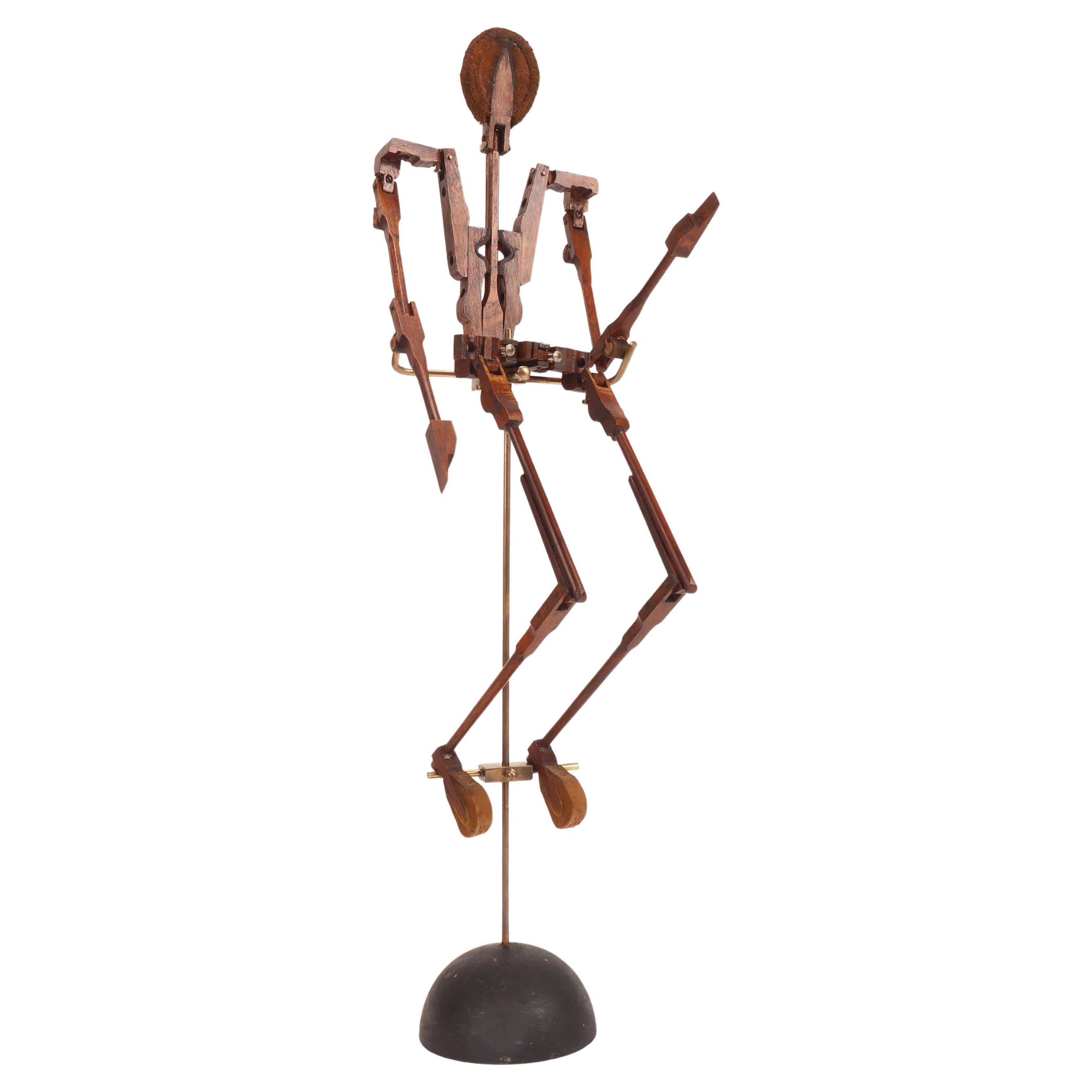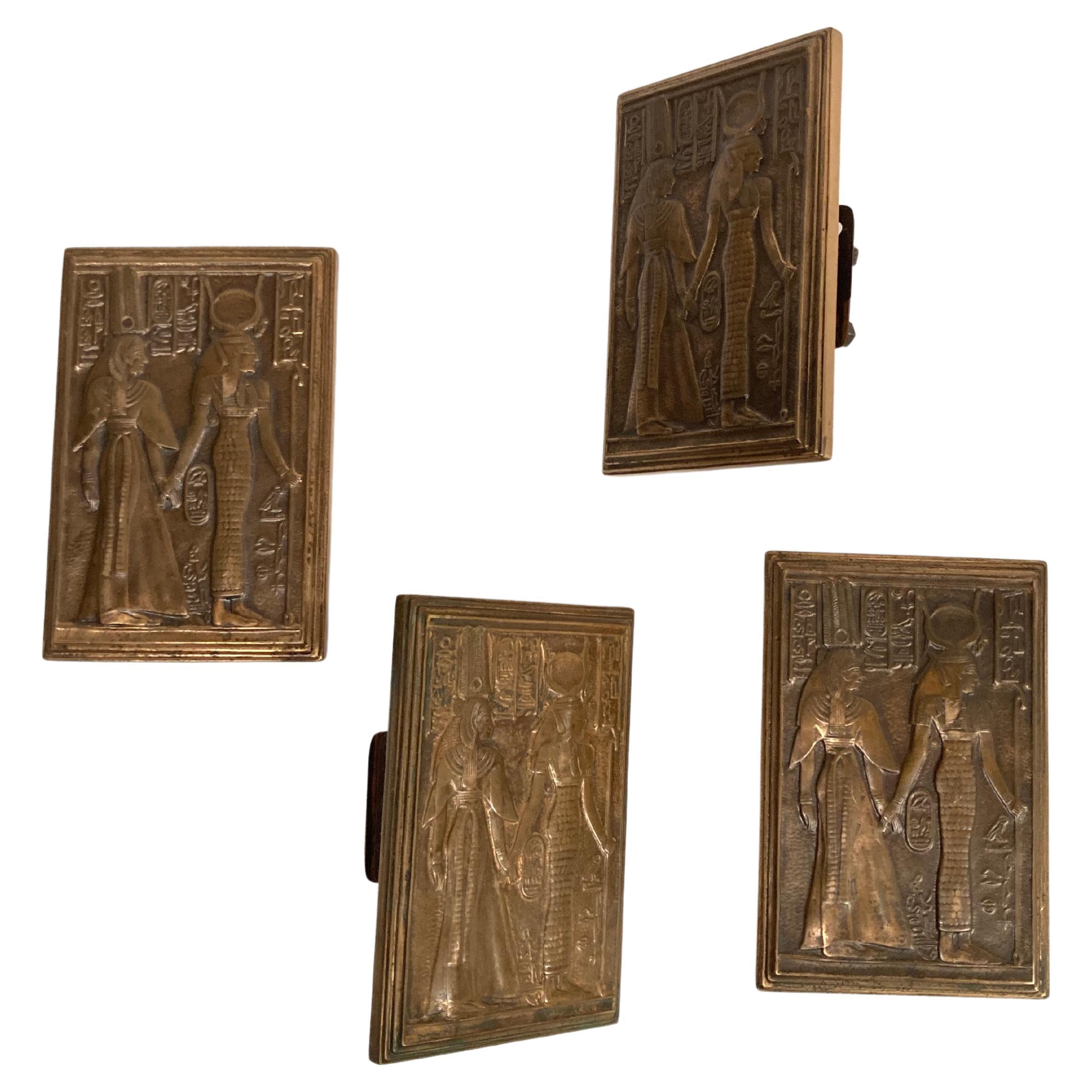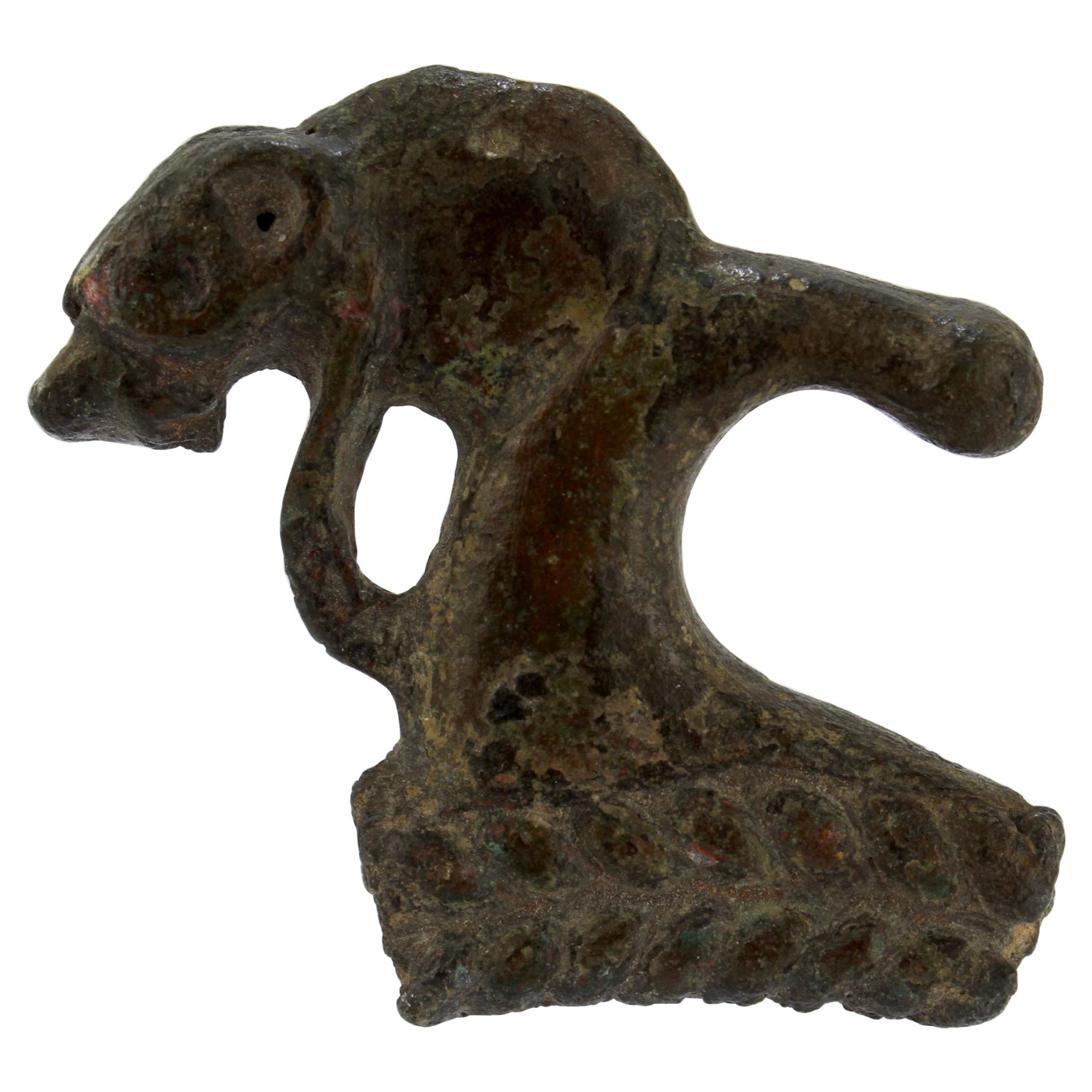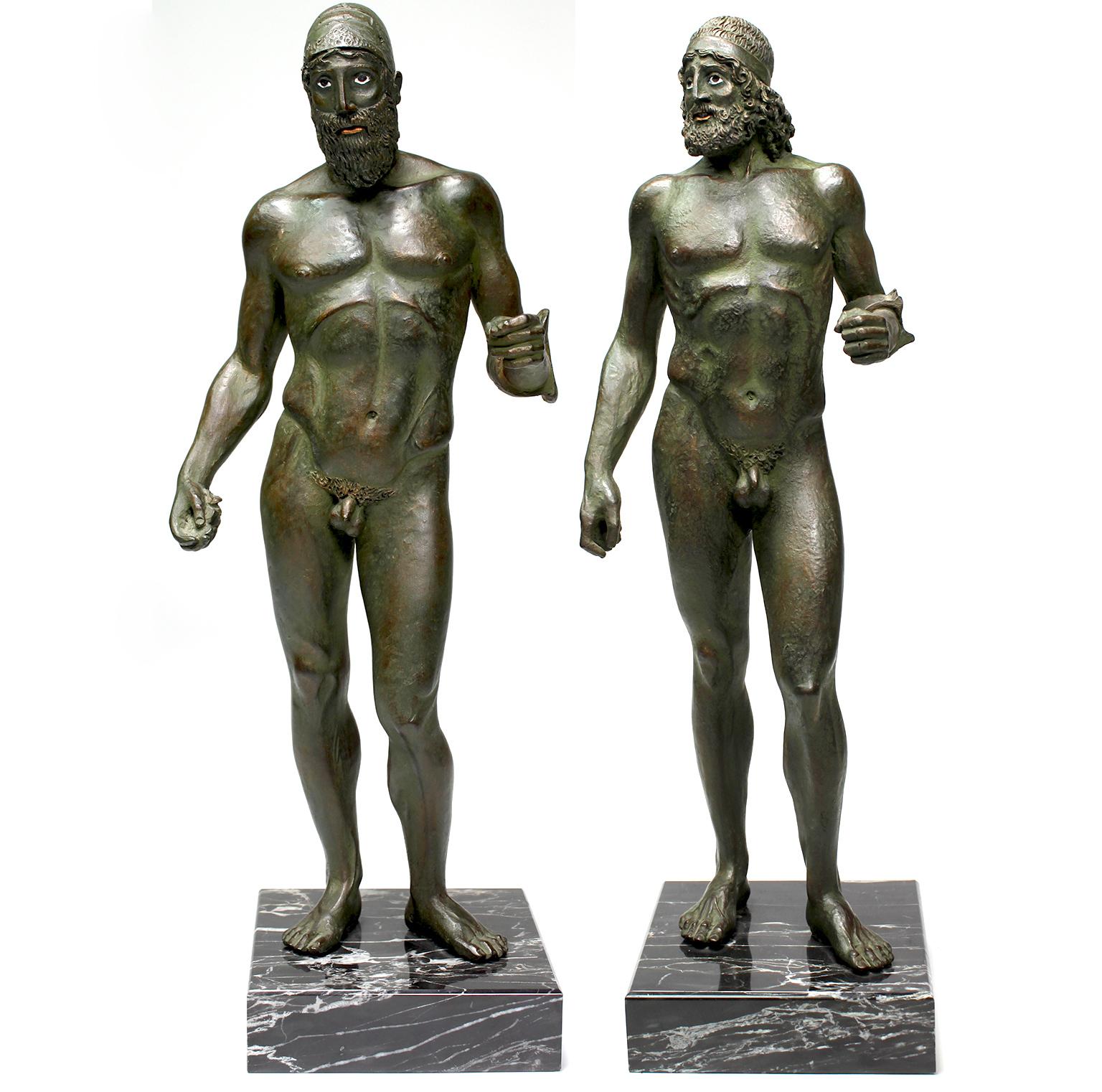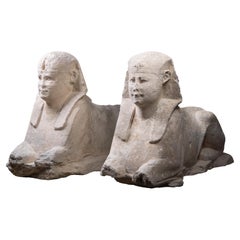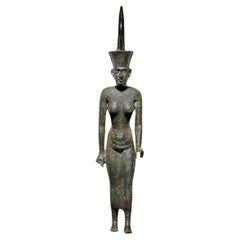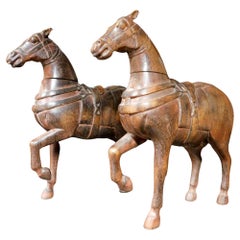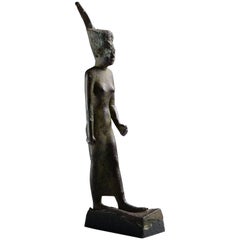
Large Ancient Egyptian Bronze Statuette of the Goddess Neith, 664 BC
View Similar Items
Want more images or videos?
Request additional images or videos from the seller
1 of 8
Large Ancient Egyptian Bronze Statuette of the Goddess Neith, 664 BC
About the Item
- Dimensions:Height: 9.85 in (25 cm)Diameter: 3.35 in (8.5 cm)
- Style:Egyptian (Of the Period)
- Materials and Techniques:
- Place of Origin:
- Period:
- Date of Manufacture:664 BC
- Condition:An area of corrosion to the right side of the head and with signs of ancient fire damage. Unrestored and mounted on an integral base.
- Seller Location:London, GB
- Reference Number:1stDibs: LU105228989821
About the Seller
5.0
Recognized Seller
These prestigious sellers are industry leaders and represent the highest echelon for item quality and design.
Established in 2008
1stDibs seller since 2014
100 sales on 1stDibs
Typical response time: 5 hours
Associations
LAPADA - The Association of Arts & Antiques DealersInternational Confederation of Art and Antique Dealers' AssociationsThe British Antique Dealers' Association
More From This SellerView All
- Ancient Greek Hellenistic Bronze Statuette of SatyrLocated in London, GBBeautifully cast statuette of a satyr, Greek, Hellenistic Period, 3rd-2nd Century BC, solid cast bronze The present work is a wonderful example of the finest Hellenistic style. The ...Category
Antique 15th Century and Earlier Greek Classical Greek Figurative Sculpt...
MaterialsBronze
- Ancient Egyptian Monumental Temple SphinxesLocated in London, GBA pair of monumental limestone sphinxes of Pharaoh Nectanebo I, from the processional avenue of the Serapeum of Memphis, 30th Dynasty, circa 379 - 360 BC. The sphinxes of the Serapeum have captivated travellers since Roman times. However, despite their significance, they are conspicuously absent from the collections of most major museums. Indeed, their existence in private hands is so improbable, and their imitations so numerous, that the present sphinxes were assumed to be modern copies throughout their recent ownership history. Finally recognised and conserved after an extraordinary chance discovery at a garden furniture sale...Category
Antique 15th Century and Earlier Egyptian Egyptian Figurative Sculptures
MaterialsLimestone
- Etruscan Bronze Statuette of Discus ThrowerLocated in London, GBA remarkably fine example of Archaic sculpture. A figure of a discophoros, or discus bearer, standing with his right leg forward, gripping a discus in his right hand, the left arm raised with an open palm. Described with admiration in Münzen und Medaillen's 1961 auction, "The figure is a masterpiece and illustrates with rare vividness the essence of good Etruscan sculpture...Category
Antique 15th Century and Earlier Figurative Sculptures
MaterialsBronze
- Egyptian Head of a ManLocated in London, GBEgyptian head of a man, carved granite. 18th Dynasty, circa 1550-1292 B.C. Carved in beautiful dark granite, this head depicts an elite individual, perha...Category
Antique 15th Century and Earlier Egyptian Egyptian Busts
MaterialsGranite
- Roman Marble Statuette of JupiterLocated in London, GBRoman Marble Fragment of jupiter Circa 2nd-3rd Century A.D. Measure: Height: 19.7 cm This beautiful Roman fragmentary statuette depicts Jupiter, the king of the gods, here recognisable from his two chief attributes, the eagle with outstretched wings - according the Pseudo-Hyginus, singled out by Jupiter because ''it alone, men say, strives to fly straight into the rays of the rising sun'' - and the base of the scepter, which remains at the side of the left foot, an aspect likely borrowed from the statue of Zeus at Olympia, once one of the Seven Wonders of the World. Though much of the original piece has been lost, the subtle anatomical detail in the feet mark this out as a piece of exceptional quality, and the work of an artist of particular talent and patience - as Johann Winckelmann once said of the famous Belvedere Torso, ''if you contemplate this with a quiet eye [...] the god will at once become visible in this stone.'' This fragment once caught the eye of Henry Howard, 4th Earl of Carlisle (1694-1758), a Knight of the Garter and among the most prolific collectors of his day. The piece, acquired during his travels to Rome, was proudly displayed on an alcove of the Western Staircase of Castle Howard...Category
Antique 15th Century and Earlier Italian Classical Roman Figurative Scul...
MaterialsMarble
- Exceptional Egyptian Sarcophagus MaskLocated in London, GBExceptionally Fine Wooden Sarcophagus Mask Third Intermediate Period, 21st Dynasty, circa 1069-945 BC. Acacia wood, rosewood, hippopotamus ivory Masterfully carved from a single piece of fine-grained hardwood, the present mask is characteristic of the most exquisite funerary art made during the 21st Dynasty, and was probably commissioned for a particularly high-ranking individual. The oval face displays a gently smiling mouth with full, outlined lips, furrows at the corners and a bow-shaped philtrum. The straight nose with rounded nostrils, the cheeks full and fleshy and the large, almond shaped eyes with heavy lids and tapering cosmetic lines, set below long, sweeping eyebrows. Social collapse across the Mediterranean in the Late Bronze Age meant that the 21st Dynasty in Egypt was a period of great turmoil. Trade routes were disrupted, governments collapsed, and mass migration occurred. Economic scarcity meant that traditional funerary practices in Egypt were also affected, with a lack of material and financial resources leading to the reuse of preexisting material. As a result, during the 21st Dynasty, 19th and 20th Dynasty coffins changed ownership rapidly and were heavily recycled for new purposes. Tombs were also unmarked allowing them to be shared by many people. These new practices brought forth a shift in the understanding of funerary paraphernalia. No longer important objects owned forever by the deceased, they were now simply seen as short-term transformative devices, whose symbolic and ritualistic meaning could be appropriated for others. However, paradoxically, the art of coffin-making also reached new heights during this period, and many of the richly dec- orated “yellow” coffins, characteristic of the 21st Dynasty, are remarkable works of art in their own right. Indeed, knowing that coffins were being reused throughout Egypt, the Egyptian élite set themself apart by commissioning lavish sarcophagi decorated with the images and texts meant to help guide them to the afterlife, and which would otherwise have adorned the tomb walls. As coffins were the chief funerary element which now identified the dead and allowed them a physical presence in the world of the living, their quality and appearance were of the utmost importance. The traditional coffin ensemble was made of three parts: a wooden mummy cover, which laid directly atop the mummy, an inner coffin, and an outer coffin, both made of a lid and case. Additional decorative elements, such as masks, were carved out separately and later glued or pegged to the lids. After the completion of the painted decoration, the sarcophagus was covered in a varnish to give it its yellow colour. Gilding was sometimes used for the coffins of the high priests’ families, notably on parts representing naked skin, such as the face mask. However, some of the élite tactically avoided gilding altogether as to ensure that their coffin would not be looted. When manufacturing the inner and outer coffins, particular attention was paid to the woodwork. Displaying the skill of the carpenter, this type of funerary art has largely remained unparalleled throughout Egyptian history. The principal wood used to craft the present mask is Acacia nilotica. The evergreen Egyptian acacia was considered sacred and said to be the tree of life, the birthplace of the god Horus, as well as symbolic of Osiris, the god of the dead and resurrection. The modelling of the face in the wood is superb, but the inlays also help mark this mask out as exceptional. Inlaid eyes and eyebrows were extremely rare and reserved to the finest and most expensive coffins. Traditionally, eyes were made of calcite, obsidian, or quartz, and eyebrows of coloured glass paste or bronze. Here, the pupils, eyebrows, and cosmetic lines are inlaid with Dalbergia melanoxylon, a rare type of wood which belongs to the rosewood genus. In antiquity, however, it was known as Ebony of the Pharaohs, from the Egyptian word “hbny”, meaning dark timber, because of its black, lustrous appearance. An extremely dense and hard wood requiring significant skill to work with, ebony was a luxury material highly coveted by the pharaohs themselves, to make furniture, decorative and funerary objects. The wood was imported with great effort from the southern Land of Punt, most likely modern Sudan, Ethiopia, Djibouti, and Eritrea, alongside other luxury goods such as gold and ivory. A magnificent ebony throne, recovered in the tomb of King Tutankhamun, illustrates the incredible aesthetic potential of this material and why it was so highly valued by Egyptian royalty. Only élite members of Egyptian society could have afford- ed Ebony of the Pharaoh inlays for their funerary mask. The sclerae on the present piece were once both inlaid with hippopotamus ivory. Whiter than elephant ivory, this type of ivory is also denser, and more difficult to carve. The use of this luxury material, reputed for its gleaming appearance, enhances the lifelikeness of the eyes. For the Egyptians, hippopotamus ivory was imbued with magic powers. The hippopotamus was indeed both feared and venerated due to its aggressive behaviour. Whilst the male hippopotamus was associated with danger and chaos, the female was benevolent and invoked for protection, especially of the house and of mothers and their children, through the hippopotamus goddess Tawaret. Thus, not only was hippopotamus ivory used as an inlay and to make practical objects, such as combs and clappers, but it was also used to make talismans like apotropaic wands or knives. Made during a time of scarcity where few could afford made-to-order coffins, the present mask could have only belonged to one of the highest-ranking individuals in society. Undoubtedly one of the finest Egyptian coffin...Category
Antique 15th Century and Earlier Egyptian Egyptian Figurative Sculptures
MaterialsFruitwood, Hardwood
You May Also Like
- Statuette of the Goddess NeithLocated in London, GBBronze statue of the goddess Neith, striding, her left foot extended forward. Her left hand is extended forward and formally held a papyrus sceptre, a fragmentary ankh is visible in ...Category
Antique 15th Century and Earlier Egyptian Egyptian Antiquities
MaterialsBronze
$127,177 - Ancient Greek Terracotta Antefix in Form of the Head of Artemis Bendis, TarantoLocated in Antwerp, BEAncient Greek mould-made terracotta antefix decorated with the female head of the Goddess Artemis Bendis. Western Greek, Italy, Taranto, early 4th century BC. Two small feathered win...Category
Antique 15th Century and Earlier Italian Classical Greek Antiquities
MaterialsCeramic
- Ancient Pair of Carved Wooden Sculptures of Horses, 19th CenturyLocated in Cuneo, Italy (CN)Ancient pair of carved hardwood sculptures, depicting a pair of trotting horses, sculpted in the 19th century. They measure about W 7 x H 30 x T 30 cm.Category
Antique Early 19th Century European Animal Sculptures
MaterialsWood
- A Rare and Finely Detailed Greek Bronze Statuette of an Actor with Large PhallusLocated in London, GBA Rare and Finely Detailed Greek Bronze Statuette of an Actor with Large Phallus Bronze Greek First half of 4th Century BC Size: 10.5cm high - 4¼ ins high Provenance: Ex Privat...Category
Antique 15th Century and Earlier Greek Antiquities
MaterialsBronze
- Nok Terracotta Standing Dignitary Figure, TL Tested, Nigeria Africa 500-100 BCLocated in San Pedro Garza Garcia, Nuevo LeonNok Terracotta Standing Dignitary Figure in Royal Pose. I-II Century AD. Certificate of Authenticity with TL Test and Passport from Europe. Museum Piece...Category
Antique 15th Century and Earlier Nigerian Primitive Figurative Sculptures
MaterialsTerracotta
- 2 Ancient Carved Stone Brown Ring Bi Disc Sculptures Iron Stands ModernistLocated in Dayton, OHPair of orange/brown stone carved bi-discs. The bi or pi disc is a flat disc with a circular hole in the center. The discs date back to Neolithic times (5,000-2,000 bc). Archeologist...Category
Antique 15th Century and Earlier Primitive Natural Specimens
MaterialsStone, Iron
Recently Viewed
View AllMore Ways To Browse
Paul Silvestre On Sale
Peter Grieve On Sale
Porcelain Le Nove
Raphael Schwartz
Retro Santa Clause
Robert Kuo Mushroom
Rosenthal Edwardian
Royal Copenhagen Boy With Umbrella
Rudolf Marcuse
Seletti Robot
Sevres Bisque Figurine
Staffordshire Girl Riding Goat
Terraco Beesel
Tobey Henderson
Toby Henderson
Toguna Post
Trans Europ Express
Ugo Cipriani On Sale
